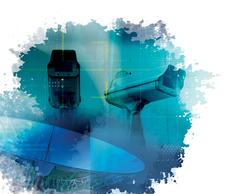Sandboxing
Sandboxing

Unknown and Untrusted
If you're like me, you love to test new software, and therein lies one of the huge advantages of the open source world. Almost everything is just a short wget, ./configure; make; make install away, and there's no need to pay, register, provide personal information, wait a week for the CD to arrive, and so forth. But how can you be certain that the software won't interfere with your system, overwrite something, or otherwise behave badly?
Or what if you want to run a web service that you know has a history of problems allowing for remote code execution on the web server?
Sandboxing
A common programming and system administration technique is to use sandboxes, which essentially are restricted areas for the software (or in some cases, an entire operating system or group of systems) to run where it can't interfere with production systems. By setting up a walled-off testing area, you know that if anything does go wrong, it is less likely to cause severe problems, such as affecting your real file server or web server. Additionally, it is easier to observe and verify the behavior of the software because there is less going on within the sandbox.
[...]
Buy this article as PDF
(incl. VAT)
Buy Linux Magazine
Subscribe to our Linux Newsletters
Find Linux and Open Source Jobs
Subscribe to our ADMIN Newsletters
Support Our Work
Linux Magazine content is made possible with support from readers like you. Please consider contributing when you’ve found an article to be beneficial.

News
-
Parrot OS Switches to KDE Plasma Desktop
Yet another distro is making the move to the KDE Plasma desktop.
-
TUXEDO Announces Gemini 17
TUXEDO Computers has released the fourth generation of its Gemini laptop with plenty of updates.
-
Two New Distros Adopt Enlightenment
MX Moksha and AV Linux 25 join ranks with Bodhi Linux and embrace the Enlightenment desktop.
-
Solus Linux 4.8 Removes Python 2
Solus Linux 4.8 has been released with the latest Linux kernel, updated desktops, and a key removal.
-
Zorin OS 18 Hits over a Million Downloads
If you doubt Linux isn't gaining popularity, you only have to look at Zorin OS's download numbers.
-
TUXEDO Computers Scraps Snapdragon X1E-Based Laptop
Due to issues with a Snapdragon CPU, TUXEDO Computers has cancelled its plans to release a laptop based on this elite hardware.
-
Debian Unleashes Debian Libre Live
Debian Libre Live keeps your machine free of proprietary software.
-
Valve Announces Pending Release of Steam Machine
Shout it to the heavens: Steam Machine, powered by Linux, is set to arrive in 2026.
-
Happy Birthday, ADMIN Magazine!
ADMIN is celebrating its 15th anniversary with issue #90.
-
Another Linux Malware Discovered
Russian hackers use Hyper-V to hide malware within Linux virtual machines.

